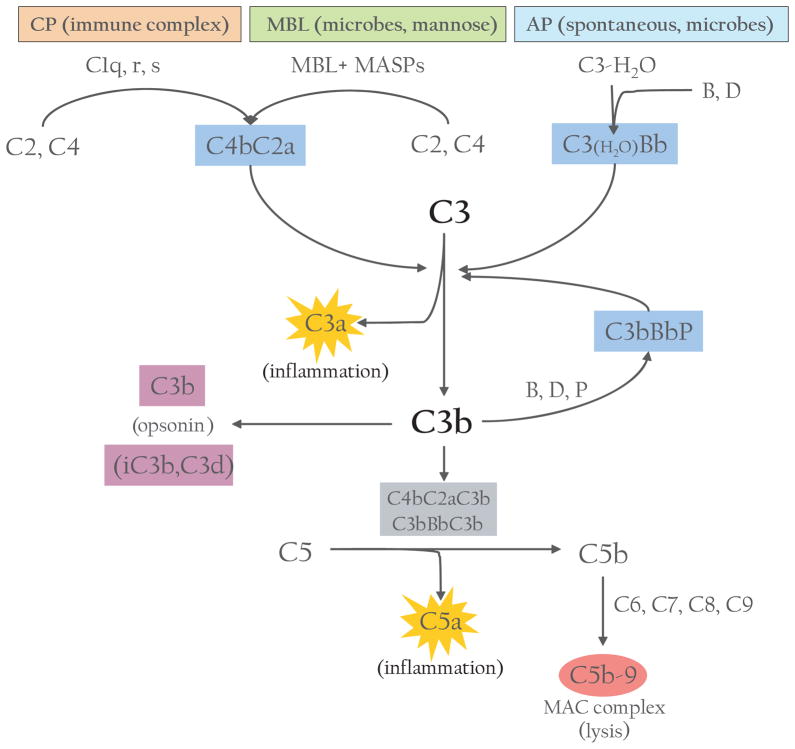Fig. 1.
Overview of the complement system. Activation can be initiated by one of three pathways: classical (CP), mannose-binding lectin (MBL) or alternative (AP). C3 convertases cleave C3 into C3a and C3b. C3b (and further cleavage products) can act as opsonins; C3b also forms additional C3 convertase or C5 convertases, which cleave C5 into C5a and C5b. C5b initiates the terminal complement pathway involving C6, C7, C8 and C9 to form the membrane attack complex (MAC) to cause lysis. C3a and C5a fragments are potent anaphylatoxins that cause inflammation and recruit immune cells to site of injury.

